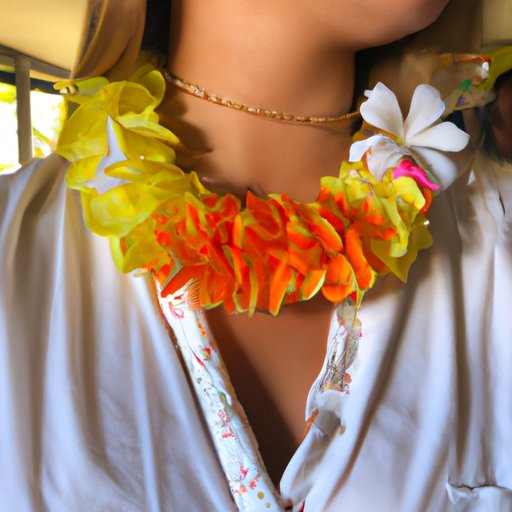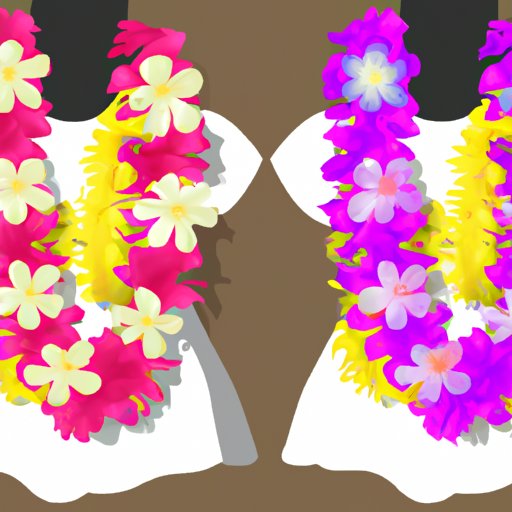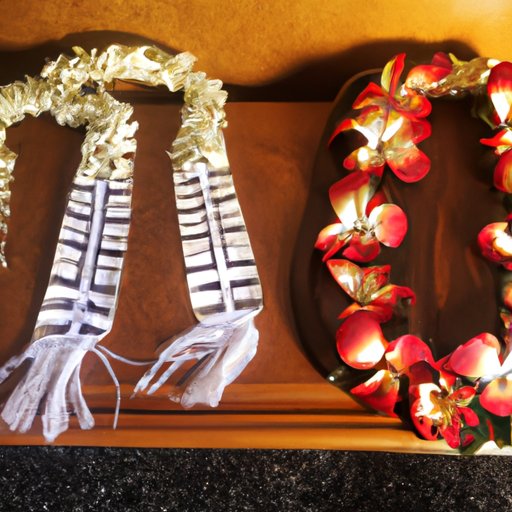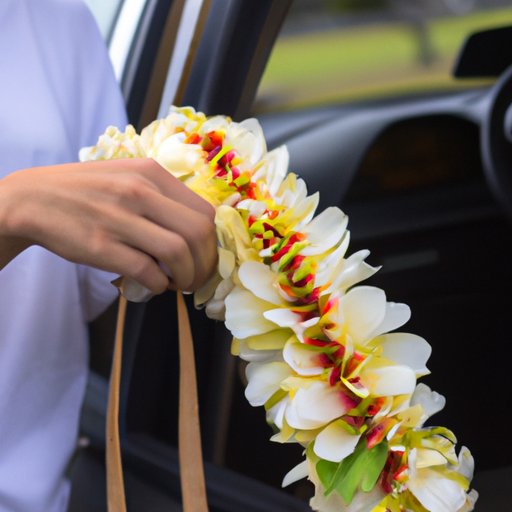Are Leis Cultural Appropriation?
Cultural appropriation is the adoption of elements of one culture by members of a different culture. This can include clothing, music, art, and other forms of cultural expression. In recent years, there has been debate about whether the traditional Hawaiian lei is an example of cultural appropriation. In this article, we will explore the historical and cultural significance of lei making in Hawaiian culture and the difference between appreciation and appropriation of leis.

Historical and Cultural Significance of Lei Making in Hawaiian Culture
Lei making is a traditional practice in Hawaiian culture, with a long history dating back to ancient times. In Hawaiian culture, leis are worn for a variety of occasions, including ceremonies, weddings, and to honor guests. They are also given as symbols of love and respect. Traditional Hawaiian leis are often made from natural materials such as flowers, leaves, shells, and feathers. Each type of lei holds a unique meaning and significance.
According to Kalei Nu’uhiwa, a Hawaiian cultural practitioner, “Lei making is a sacred practice in Hawaiian culture. It is a way to connect to our ancestors and the land. It is a way to honor and show respect for others.”
Lei making is also an important part of Hawaiian cultural heritage and identity. The Hawaiian scholar, Haunani-Kay Trask, states that “the Hawaiian lei is more than just a symbol of aloha, it is a powerful statement of cultural identity and resistance to colonialism.”

Differences between Appreciation and Appropriation
The difference between appreciation and appropriation of leis is the intent behind wearing them. Appreciation of leis involves understanding and respecting the cultural significance of the lei and wearing it in a culturally appropriate way. Appropriation, on the other hand, involves wearing a lei without understanding its cultural significance or for fashion or commercial purposes.
For example, wearing a lei to a traditional Hawaiian ceremony or to honor a Hawaiian cultural practitioner would be an act of appreciation. Wearing a lei as a fashion accessory or as part of a Halloween costume would be an act of appropriation.
The Impact of Cultural Appropriation
Cultural appropriation can harm marginalized communities by undermining their cultural heritage and identity. In the case of Hawaiian culture, the commercialization and appropriation of leis can contribute to the erasure of Hawaiian identity and the commodification of a sacred cultural practice.
According to Trask, “the commercialization and appropriation of the Hawaiian lei is a form of cultural imperialism that perpetuates the subjugation of the Hawaiian people.”

Conclusion
Lei making is a traditional practice in Hawaiian culture that holds significant meaning and significance. Wearing a lei with understanding and respect for the culture is an act of appreciation, whereas wearing a lei without understanding its cultural significance or for fashion or commercial purposes is an act of appropriation. It is important to educate oneself about Hawaiian culture and to be respectful of cultural practices and customs.
(Note: Is this article not meeting your expectations? Do you have knowledge or insights to share? Unlock new opportunities and expand your reach by joining our authors team. Click Registration to join us and share your expertise with our readers.)

I’m Native Hawaiian. “Lei” is just the Hawaiian word for garlands that many other countries and cultures around the world have traditionally made for all kinds of reasons.
I don’t know who is getting upset about “cultural appropriation” with regard to leis.
Candy leis, crocheted leis, shell leis, ribbon leis, flower leis, macaroni leis…whatever.
We can’t turn the clock back. People string together objects and put it around their neck or give them as a gift to others.
Hawaiians don’t own that human act of beautification and kindness. And we didn’t invent it.
Aloha..
I am very thankful to you as a native Hawaiian for sharing this valuable knowledge. I hope your comments can assist more readers in gaining a more accurate understanding of this information.
I’m not a native Hawaiian, but perhaps my opinion, as a 30-year resident of Hawaii, is worthy of consideration. There is absolutely no controversy in Hawaii regarding whether wearing a lei is an inappropriate act of cultural appropriation.
Everyone in Hawaii feels comfortable wearing leis — ethnic Hawaiians, Hawaii-born and raised people and long-term residents, newcomers, and tourists from all over the world. Kids of all races learn how to make leis in school by using flowers, green plants, nuts, colored paper cut in the shapes of flowers, or even leis made of candy or money given to kids at birthday or graduation celebrations. Nobody complains about any of this except extremely rare zealots looking for beef (fight).
Some people enrich their lives by learning the historical and spiritual significance of specific kinds of leis, including the names and stories of the native gods embodied in the flowers, ferns, and nuts. Nobody regards this as inappropriate or disrespectful or some sort of “cultural appropriation.” Maybe that’s because “Native Hawaiians” are themselves the world champions of cultural appropriation. When British Captain Cook arrived in 1778, native Hawaiians were literally living in the stone-age — no metal, no clay pots, no written language, no beasts of burden — all those things were brought by Europeans and Americans and then Asians. Hawaiian natives eagerly appropriated those cultures for themselves, along with Christian religion, rule of law, and abolition of human sacrifice. Today we all live, work, play, pray, and intermarry together. If a reckoning of debts is to be calculated, then today’s intermixed descendants of the original natives, by welcoming everyone to share their beautiful cultural heritage including making and wearing leis, are merely making a small payment toward the debt they owe for the culture they have appropriated from the rest of the world.
In my own case, I came as a tourist to Hawaii beginning in 1982, moved here permanently in 1992, have learned Hawaiian language to a moderate level of fluency, participated in restoration of an ancient fishpond and heiau (stone temple) — and made my own kukui-nut lei from scratch by harvesting the nuts from where they had fallen, cleaning them, drilling holes in the ends of the nuts, cleaning out the insides, and stringing them. I have worn that lei on special occasions since 1995. It is exactly the correct lei for me to wear because in Hawaiian culture the lei kukui is symbolic of the quest for enlightenment and wisdom, which defines my 30-year career as a teacher, professor, and writer; ongoing research, meditation and writing; and my continuing immersion in Hawaii’s multiplicity of cultures and races.
Thank you very much for sharing these contents. With them, readers will have a deeper understanding of Hawaiian culture, and I hope your life in Hawaii is as you wish it to be.
Native Hawaiians themselves initially invaded Hawaii and colonized the inhabitants then willfully invited and endorsed progressive Western influence and custom. It is not disrespectful nor inappropriate for ANYONE today to ride canoes, surf, sunbathe, live in grass huts, dance hula, or wear leis, same as it is not disrespectful or inappropriate for native hawaiians to wear pants and shoes or boogie on with cell phones, which we do.